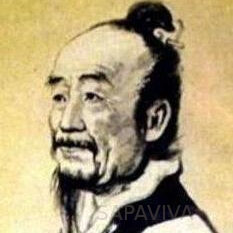(circa 225 – 295 AD)
The perspicacious Liu Hui is regarded by many pundits as China’s greatest mathematician. Although geodesy and geometry were his habitat, he succeeded in revamping algebra, arithmetic, metrology, and other branches of maths which existed during his era: improving upon Zhang Heng’s brilliant foundations. He was particularly extolled for: introducing negative numbers into mathematics, enhancing pi-value, and novelty works on both plane and solid geometries. More of his ingenuities manifested in his annotations, corrections, and solutions to the generations-long Jiuzhang Suanshu (i.e. The Nine Chapters on the Mathematical Art). One of his acclaimed treatises titled Haidao Suanjing (i.e. The Sea Island Mathematical Manual) was designed as addendum to the Chapter 9 of Jiuzhang Suanshu. Various algorithms he developed for cartography, surveying and engineering, (including what are now referred to as the Gaussian Elimination and the Cavalieri’s Principle), were so advanced that Europeans never encountered them until 1300 years later. The brilliance of his works caused his fame to reverberate throughout Asia. Neighboring Indians, Koreans, and Japanese learned from him. Middle Eastern merchants and scholars, who ventured into the Far East, brought back versions of his treatises. It was some of these works, which Muhammad Al-Khwarizmi translated, updated and disseminated, that Leonardo Fibonacci brought to Europe during his medieval voyages. Their rich contents not only enlightened Europeans; they were crucial in setting the stage for several groundbreaking Renaissance-era initiatives. Thus, it could be said that Liu Hui’s perspicacity continued to transform Europe (and the wider world) well-over a millennium after his death.


Commendable blog with wonderful research summaries!
Cool article.
Always find what I search for. Many awesome posts on this website.
As good as they said it is. I’ll revisit on weekend for complete exploration.
Your website is full of good write-ups. You are very intelligent.
Thank you for the great post
It is interesting and I am enjoying everything so far.
Wonderful summary! Exactly how reviews should be!
I came to your 14. LIU HUI – SAPAVIVA page and noticed you could have a lot more traffic. I have found that the key to running a website is making sure the visitors you are getting are interested in your subject matter. We can send you targeted traffic and we let you try it for free.
Your contents are excellent.
It’s so far so good for me. I’ve been blown away by what I’ve read up to this point. Looking forward to coming back for more later.
Thanks to Google I found this site.
Top-tier!
Surely one of the best out there
I like Liu Hui. Definitely one of the best masters.
Double thumbs-up!
Neat post! Great writing style!
Hello, I love your website’s structure and contents.
Superbly written! Liu Hui was the best of his time.
A million praises!
I’m not a scientist but love this kind of stuffs. Thanks for making it easy to understand.
Wow! This is amazing.
Like!! I blog quite often and I genuinely thank you for your information. The article has truly peaked my interest.
I love this website
Great Anthology
It’s good to learn about him.
Great contents! Good luck with this amazing website!
A wide range of science blog always interests me. Thank you.
Just to say that I appreciate your articles.
Everything is clear and captivating.
Amazing!
He was the Sunrise from the east.
Whoah! This is great article.
Woah! I’m really digging this website.
Appreciate the info, thanks.
Amazing
Just learning about him 😮
This is extraordinary.
Excellent👌👍
Left a lasting legacy
Fantastico